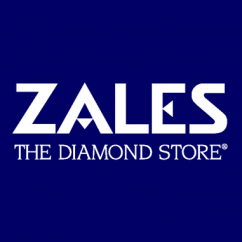Articles and News
Editorial: What The Signet-Zale Merger Means For Luxury Jewelers | February 19, 2014 (0 comments)

Dallas, TX—Like the acid-tongued couple with too many sparks to ignore, it was inevitable. After years of speculation, Zale Corp. has been bought by chief rival Signet Jewelers Ltd. Signet is the parent company of Kay Jewelers and Jared The Galleria Of Jewelry here, as well as H. Samuels and Ernest Jones in the United Kingdom.
For decades, Zale has been beset by up and (often) down sales results stemming from revolving management teams and a loss of focus on its core market positioning. At one time, the jeweler owned a variety of brands ranging from the luxury Bailey, Banks & Biddle to the low-end Piercing Pagoda kiosks. It jettisoned BB&B but retained Piercing Pagoda, choosing to focus on the entry-level and mid-range consumer. Today its stable of brands includes Zales, Zales Outlet, Gordons Jewelers, and Piercing Pagoda in the United States, and Peoples Jewellers and Mappins Jewellers in Canada.
Signet, meanwhile, has boasted a steady record of performance, and industry analysts have pointed to its strong U.S. media presence as at least partially filling the void left when De Beers ceased generic diamond advertising. “Every Kiss Begins With Kay” and “He Got It At Jared” are recognizable taglines.
The agreement, announced Wednesday, is for Signet to acquire all of the issued and outstanding stock of Zale for $21.00 per share, a total of $1.4 billion. The transaction is subject to Zale stockholder approval, regulatory approval and customary closing conditions. It will bring the total annual sales of the Signet brands to $6.2 billion.
"This transformational acquisition further diversifies our businesses and extends our international footprint, opening the door to greater growth and innovation across the enterprise," stated Mike Barnes, Signet CEO, in a statement. "The addition of Zale to the Signet family is consistent with our long-term growth strategy and leverages our combined operating expertise to create better choices for our customers, new opportunities for our employees, and makes us a more attractive partner to our vendors. In addition, it allows us to better optimize our balance sheet, creating long-term value for our shareholders. We are excited about the prospects for the combined company and the many opportunities that this creates for our future. I am happy to say it is our intention that Zale will continue to run under current leader CEO, Theo Killion, who would report directly to me after the transaction closes."
Signet anticipates the deal to create about $100 million in synergies between the two companies. Surely it will mean some closings and consolidations. The net result, however, is a strong “good, better, best” network in place and presence in every part of the market from the teen-oriented Piercing Pagoda through the upscale Jared customer.
But what will it mean to luxury jewelers?
In my opinion, it could become a competitor down the road. At first, you won’t see any impact. It takes time—probably the better part of a year—to get through all the regulatory processes and finalize the deal. Then once it is finished, it takes more time to figure out exactly who’s going to do what, and who’s going to be left out in the cold. Of course, those issues and synergies are being examined all along, but it still will take more time for everything to settle into place.
But contrary to Barnes’s statement, the acquisition doesn’t diversify Signet’s business all that much. There’s a lot of overlap between the two companies, especially in the middle market where Kay, Zales, and Gordons duke it out. It does extend the Signet/Sterling reach down to the entry level with Piercing Pagoda, and also into Canada, but there’s one glaring omission: it does not have a strong presence in the luxury market—yet. Its upscale Jared division offers accessible luxury, but to use a car brand analogy, it’s more like a Lexus than a Maserati. It has some tony offerings, such as a Tag Heuer Carerra watch for $16,900 and a 15 ctw diamond riviere necklace for $29,999, but it also has a blue and white diamond necklace in sterling silver for $59.99.
Sterling’s management may ultimately decide there’s strength in numbers, as there are many more Lexuses on the road than Maseratis, and that it’s not worth going after the fewer (but far richer) Maserati customers. Or the strong performance of the ultra-luxury market may prove irresistible and the company will find a way to insert itself into the mix. Whichever way it goes, it will have unbelievable purchasing clout and it already has outstanding marketing clout, so it will be a most vigorous competitor if it does decide to edge into the ultra-luxe market.
Independents need to focus on the advantages they already have: long-standing history and ties to the community. Social media helps your marketing dollars multiply their impact, and even more so because you can directly communicate with members of your own community, but invest now in a solid social media strategy. (See this example from Lee Michaels.)
Big companies can do anything you can do, and they can do it more efficiently. But it comes down to the old adage that possession is 9/10 of the law: ownership is much easier to maintain when you already have possession of the desired result.







